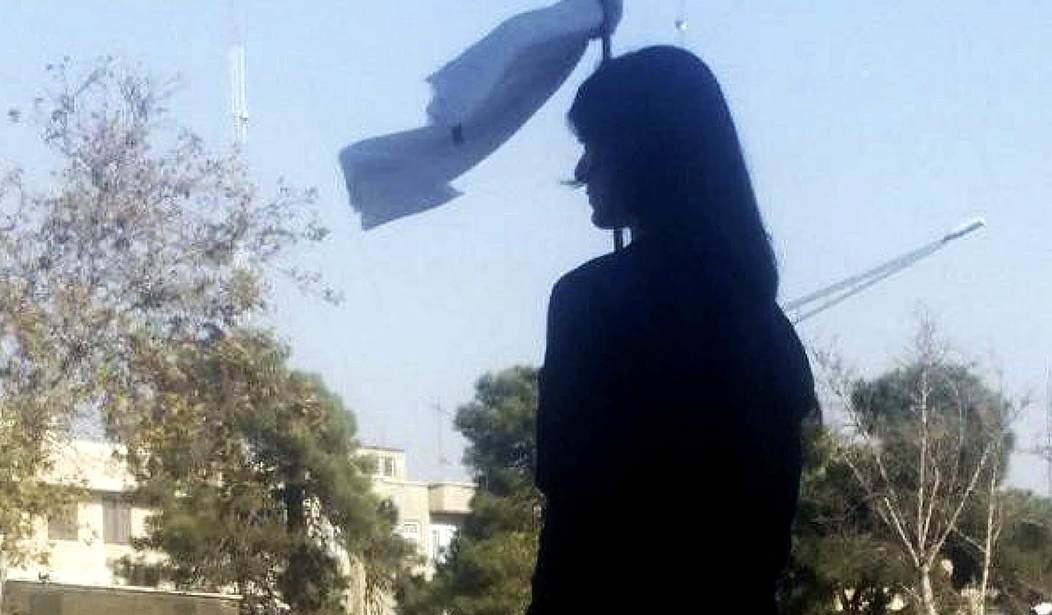Marketing can be weaponized: ISIS, al-Qaeda, and Hezbollah did so to give their “brands” greater reach and impact. Like any weapon, marketing can be used for good or ill. In the hands of Iranian protesters, it can topple a repressive regime and replace it with something better.
I propose empowering them with marketing tools to transform street protests into an insurgency for lasting change. They are already using marketing techniques that built the world’s best-loved brands; they have a vision which could be turned into an inspiring brand. In 2009, they used the war cry “Give me back my Iran.” Arab Spring protesters demanded “Bread, freedom, justice.” Today, Iranians shout “Freedom or death,” “Leave Syria and think about us,” “I give my life (only) for Iran,” and “The people are begging while the clerics act like God.”
The Iranian protest brand seeks economic prosperity, freedom, and a just government free of corruption and persecution. They have brand symbols to rally around and to help tell a story that transcends language. These could evolve into iconic images like those of other mass movements in history.
They promote and spread their vision. Despite Iranian regime social media and Internet shutdowns, protesters bravely bring their message to the street and to the world. Yet, these marketing achievements are not enough. We saw in Egypt that a vision and brand well-promoted can topple a regime, but protest is insufficient unless it evolves into insurgency. That requires a product. What good is removing a despot without offering something better?
To enact change, Iranians must do more than complain, they must offer an alternative. How did Under Armour rival Nike, and iPhone crush Nokia? They did not succeed by protesting and bad-mouthing the competition; these insurgent brands stepped onto competitive battlefields with marketing to offer better products and to persuade customers to buy.
That is where American marketing expertise can help. Protest ideals can otherwise be subverted, like the Muslim Brotherhood coopting the revolution in Egypt. Indeed, former Iranian president Mahmoud Ahmadinejad is said to be “inciting unrest,” using the protests in his feud with current President Rouhani.
The time is now to develop the alternative product — a government that delivers on the protesters’ brand promise.
Here is what we can do:
Keep communication open: Companies like Twitter, Instagram, Telegram, Facebook, JustPasteIt, and others must resist Iranian regime calls to suspend service. Supporters everywhere can rapidly share and replicate content, effectively “swarmcasting” protest messages, making it impossible to close every account and stamp out every communication. Tech-savvy sympathizers can volunteer their computers as relays using TOR anonymizing technology to spread encrypted content without revealing identities or locations, circumventing Iranian censors.
Foster true exchange: Sympathizers inside and outside Iran can do more than spread protest messages. We should talk to one another and to protesters, sharing product development expertise, change processes, and seeding ideas for economic, political, and educational change.
Strengthen and spread the brand: Designers can iconize protester symbols for use across media, on flags, banners, online avatars, memes, and more. Street slogans can expand into a practical product positioning and an inspiring brand manifesto to guide product development.
Support Iranians in building the product: The Egyptian revolution foundered without an alternative to Mubarak. The U.S. can meaningfully engage to support Iranians shaping their future. Empowering individual customers (what marketers call “co-creation”) to create products, design communications, and to spread the word is a cost-effective “force multiplier.” Co-creation in the hands of grassroots revolutionaries is, according to al-Qaeda’s Ayman al-Zawahiri, “more potent than atomic bombs.”
Expatriate Iranians and other trusted change agents should use online video, articles, and even tweets and Instagram pictures to start the dialogue and articulate a better vision for Iran. Later, the Iranian movement can facilitate constitutional conventions and organizational conversations with business, civic, and professional leaders at every level to build a new government and institutions.
The Arab Spring “was just the beginning,” writes Bessma Nomani, a researcher who spent years interviewing Arab youth across socioeconomic strata. Young Middle Easterners have a “thirst for political accountability and an end to corruption, for meritocracy, decent productive work, and social justice.” Protesters can weaponize marketing to deliver a product that fulfills this brand promise. With the active protests dying down, now is the time for Iranians wanting change to start the hard work of “product development” in creating an alternative to the status quo. The protests will certainly heat up again, and then they will be ready as a full-fledged insurgency to topple the regime and replace it.
Inspired by this hope, I spent the last year working with marketing leaders, terror experts, and Muslim reformers on a blueprint to “weaponize marketing” to combat radical Islam — and to move beyond protest to positive change. Global brands like Coca-Cola, Apple, Disney, and McDonalds offer a solid product backed by decades of comprehensive sales and marketing support. Instead of fizzled protests, failed policies, feeble diplomacy and endless war, the marketing model that created top global brands can empower the Iranian people to transform their lives.









Join the conversation as a VIP Member